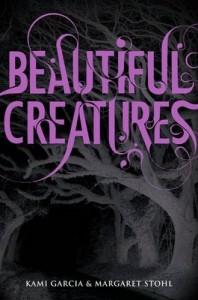 After beginning to read Beautiful Creatures by Kami Garcia and Margaret Stohl, I checked my hands to see if there happened to be glue on them. Use that as a warning. Once you start the book, it’s impossible to put it down.
After beginning to read Beautiful Creatures by Kami Garcia and Margaret Stohl, I checked my hands to see if there happened to be glue on them. Use that as a warning. Once you start the book, it’s impossible to put it down.
There is action after action and even when you close the book, what you just read stays in your thoughts throughout the whole day.
Beautiful Creatures can be classified under fantasy-fiction, and I would recommend it for readers between sixth and eighth grade. The book has a wide range of themes and settings.The themes include romance, wizardry, school-life,
the civil war, and many more! The settings go from an old town in South Carolina, to graveyards, to high schools, and even haunted mansions!
The book revolves around a high school boy named Ethan Wate who is living a boring and depressing life in the town of Gatlin. The book is also in his point of view. Ethan does not have a mother, and he spends most of the time trying to find out information about her. His Dad is no help either. He spends his whole life sitting in an office writing, never taking his eyes off the screen. Because of all this, Ethan has gained a large amount of independence. As you read, you will see how much this independence helps him in life.
The authors did a marvelous job when creating each character. Kami and Margaret made the characters realistic, unlike many other fantasy books. You easily imagine the people in the book being real and living life like
we do today. Each character is unique in his/her own way and that makes the reader pay attention closely. They all have distinct traits and you really learn a lot about how different people can be from each other.
Ethan (the main character) is continuously haunted by dreams of a mysterious girl he’s never met or seen. He is starting to lose control of his thoughts and even finds mysterious items in his room that he never had. The dreams Ethan has are very well described. You can really visualize what’s happening and it’s so well written that you feel like you’re looking through Ethan’s eyes.
The book isn’t only about a boy having nightmares. It’s also about a girl named Lena Duchannes (another main character) who moves into her Uncle’s house, also located in Gatlin. Lena’s family members are all “casters”. Now, the book’s’ definition of a “caster” isn’t exactly someone who cast spells. If you want to know what the real meaning of the word is, read the book!
Lena Duchannes is the new girl at Stonewall Jackson High. Everyone hates her because of what she wears, how she looks, where she lives, and the fact that she’s new at the school gives her a bad reputation. Not only do people think she’s bizarre, but they think her whole family is too. Well in a way, the people are right. Lena and her family aren’t normal. Actually, to be more specific, they’re not even human. Just like any other romance, the boy comes to the rescue. In this case, it’s Ethan who saves Lena from her misery. Nobody understands why such
a popular kid like Ethan would have interest in such a strange person like Lena.
The book just keeps getting better from that point. The couple constantly, become stuck in conflicts whether it’s with their friends, families, or even monstrous creatures. You’ll have to read the book to learn more about it!
There are some parts though, where it might seem slow at times. While reading the book, I felt there were scenes that did not need to be in the story. Almost as if the authors just put those scenes in to make the book longer and look bigger. Beautiful Creatures is still one of my favorite books read so far, and it is worthy enough to recommend it to a friend in the appropriate age group. Kami Garcia and Margaret Stohl came up with a great story, and I praise them for having such creativity.
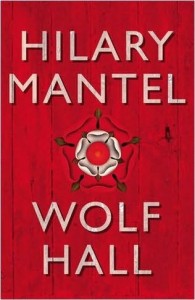 The scope and breadth of this novel is immense. Hilary Mantel sets out to describe a tumultuous period in English history, not by focusing on
The scope and breadth of this novel is immense. Hilary Mantel sets out to describe a tumultuous period in English history, not by focusing on 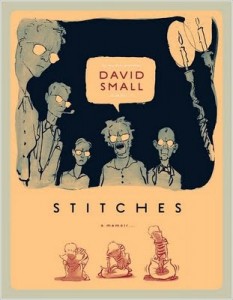 The story revolves around David Small from the age of 6 to adulthood. He comes from an interesting family–his mother and her side of the family is explored in depth. David develops a growth on his neck, which turns out to be cancer. However, his family does not tell him this, which is just one of the sources of conflict between him and his parents. I really enjoyed how the story was told. You can really feel the struggles David goes through growing up within this family.
The story revolves around David Small from the age of 6 to adulthood. He comes from an interesting family–his mother and her side of the family is explored in depth. David develops a growth on his neck, which turns out to be cancer. However, his family does not tell him this, which is just one of the sources of conflict between him and his parents. I really enjoyed how the story was told. You can really feel the struggles David goes through growing up within this family.  An amazing set of short stories by debut author Doreen Baingana, “Tropical Fish” quickly drew me in and held me captive until the very last page of the last tale in a series of stories on the lives and development of three Ugandan sisters. Largely focused on the youngest, Christine Mugisha, these stories take us into life as young women in a society full of such promise but decimated in many ways by missteps such as the regime of Idi Amin.
An amazing set of short stories by debut author Doreen Baingana, “Tropical Fish” quickly drew me in and held me captive until the very last page of the last tale in a series of stories on the lives and development of three Ugandan sisters. Largely focused on the youngest, Christine Mugisha, these stories take us into life as young women in a society full of such promise but decimated in many ways by missteps such as the regime of Idi Amin.  I want to be fair to Dan Brown.
I want to be fair to Dan Brown. 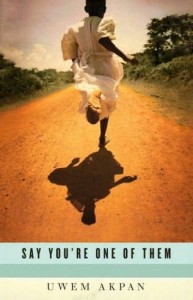 Say You’re o
Say You’re o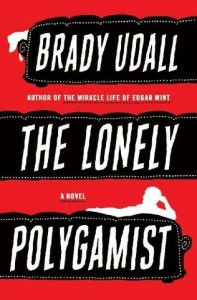 This is the best book I have rea
This is the best book I have rea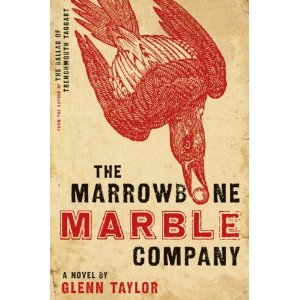 I admire the scope of this to
I admire the scope of this to